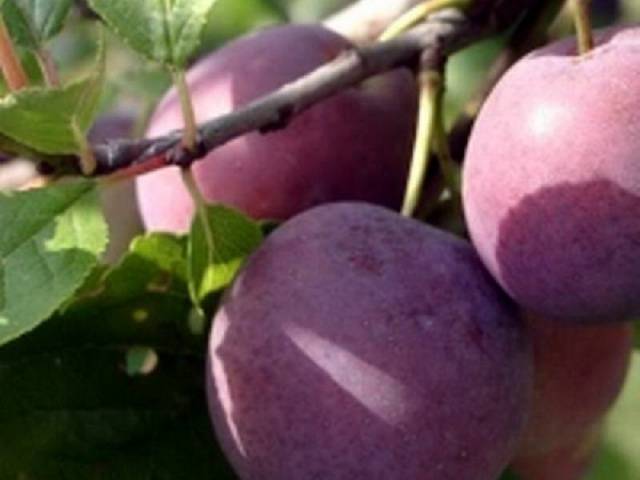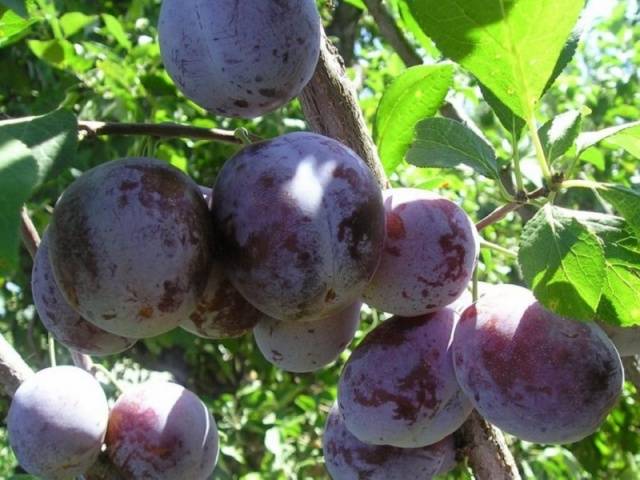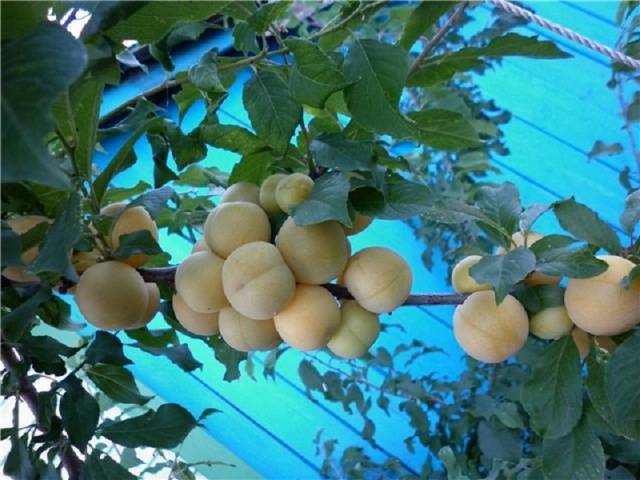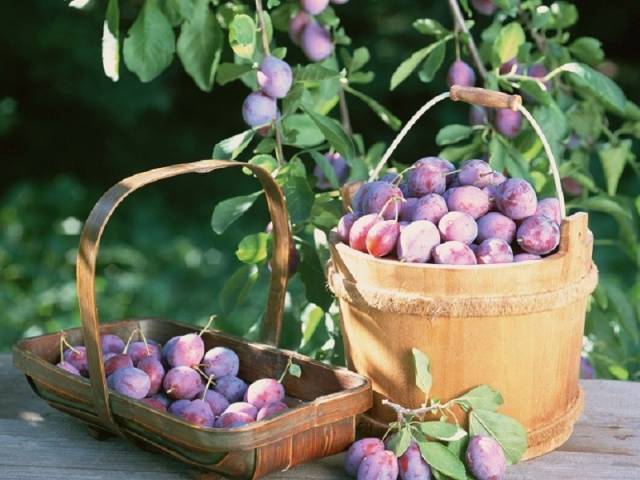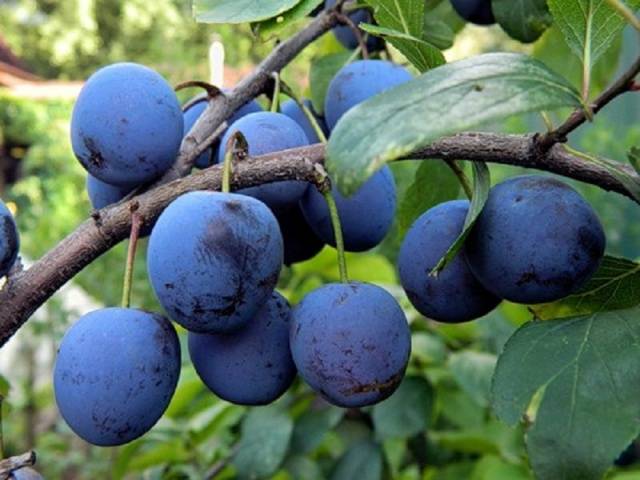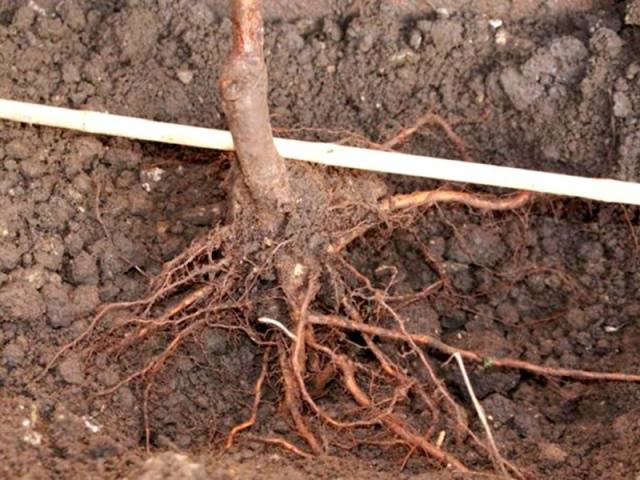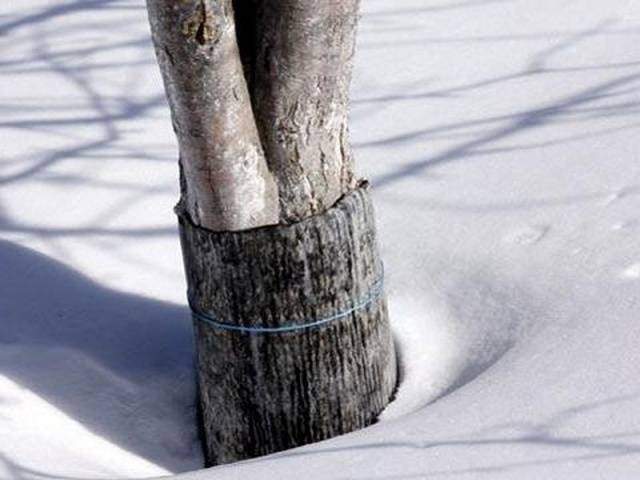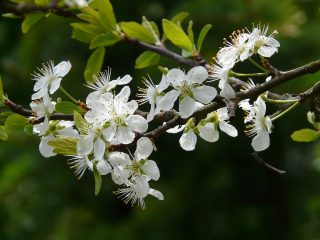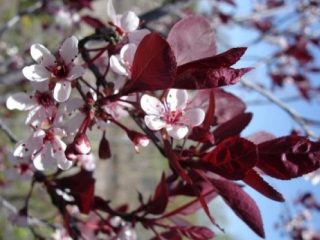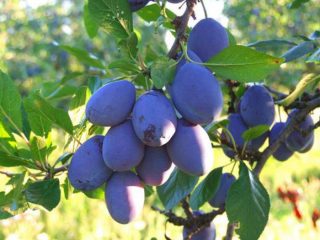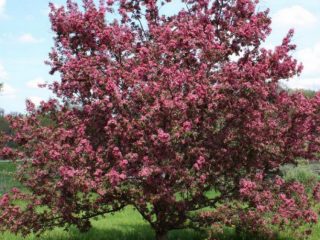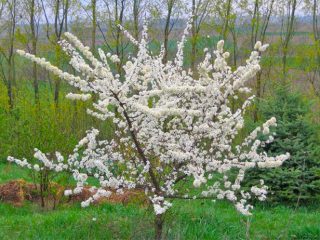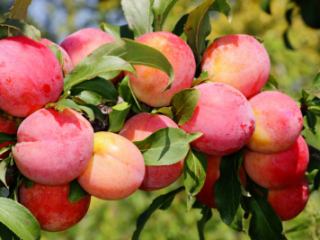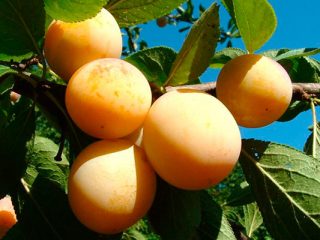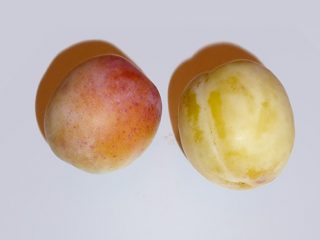Content
Chemal plum is valued by gardeners for its high yield, unpretentiousness, resistance to low temperatures, beautiful appearance and taste characteristics. Its tantalizing aroma and original taste will not leave anyone indifferent.
History of variety selection
Scientists have made great strides in creating new winter-hardy plum varieties. The result of this work is the plum of the Siberian selection Chemal, which was obtained at the Research Institute of Horticulture named after M. A. Lisavenko in the Altai mountain region (Chemal village). Variety included plums Chemalskaya was included in the State Register in 1974 and approved for use in such regions as: East Siberian, West Siberian, Ural.
Description of the Chemalskaya variety series
The culture forms a round, drooping, thickened crown. The plant is characterized by a bouquet type of fruiting. The branches are colored grayish. The standard is low. The shoots are thin, straight, brownish in color, and have a polygamy of small lentils. Vegetative buds are cone-shaped, fruit buds are circle-shaped.
The plant is decorated with medium-sized green foliage. The leaf blade has a blunt conical base, slightly concave, with a curved tip. Petiole of short length, medium thickness. The bud forms 2-3 flowers. The variety is characterized by a cup-shaped corolla and small white petals.
The fruits of the Chemalskaya plum variety are medium in size: height 25 cm, diameter 27 mm. The weight of one fruit is 14-16 g. The pulp is juicy, tender with slightly noticeable acid, and has an excellent taste. The seeds are medium sized, elongated oval in shape. The stalk is short and easily separated from the fruit.
Detailed description:
Chemal blue
The plant has an average height. Matte foliage is ovoid, colored green. Of interest are the medium-sized fruits, round in shape, dark burgundy in color with a pronounced waxy coating. The weight of one plum is 20 g. The variety has gained popularity due to its yellowish-white pulp with a sweet and sour taste.
Chemal spreading
The tree is medium-sized, with a wide spreading crown. The large, round fruits, colored cherry, attract attention. The weight of one plum of the Chemal variety is 15 grams. The orange-yellow pulp is characterized by tenderness, juiciness, sweet and sour taste and delicate aroma.
Chemal red
The plant is medium in height with a circle-shaped crown.The eye is attracted by red plums, the surface of which is distinguished by a waxy coating. The pulp of the Chemal red plum, which has a yellow-green tint and is characterized by juiciness, tenderness and an amazing taste with sourness, is prized.
Chemal large
The culture can reach a height of up to 3.2 meters and has a paniculate sparse crown. The wide oval yellow plums, decorated with a burgundy-red blush, attract attention. The weight of one fruit is up to 50 g. The juicy pulp is yellow in color and is popular due to its pleasant sweet and sour taste.
Chemal black
The Chemal black plum tree is of medium height and forms a pyramid-shaped crown. The round fruits weigh up to 16 g. The seam is well defined. The pulp has a white-yellow tint, moderate juiciness, sweet and sour taste with slight astringency at the skin. The stone is small in size and easily separated from the pulp.
All these varieties of Chemal plum are of interest to gardeners in Siberia, the Urals and the middle zone. Since in these regions the Chemal plum is able to maximize all its fruit characteristics.
Characteristics of the varietal series
Characteristics of the Chemalskaya plum variety include the plant’s resistance to low temperatures, moisture deficiency, diseases and pests, as well as the timing of flowering and harvest ripening.
Drought resistance, frost resistance
You need to know the winter hardiness of the Chemalskaya plum variety, since having survived the winter poorly, the tree will no longer produce a full harvest. According to the characteristics, the variety is winter-hardy and can withstand frosts down to -40 0C. But it is recommended to use covering material in the first years of the plant’s life and simply cover the tree trunk with snow in winter.According to the description, the Chemalskaya plum variety has poor resistance to drought.
Pollinators of Chemalskaya plum
The Chemalskaya plum variety requires cross-pollination. Any combination of Chemalskaya with one of such varieties as Peresvet, Altai Yubileiny, Sinilga, Pyramidalnaya, Krasnoselskaya will form a harvest on both one and the other tree.
The plum blossoms in May, and the fruits ripen in August.
Productivity and fruiting
One of the main advantages of the Chemalskaya plum variety is its high yield, reviews of the Chemalskaya plum confirm this. Plum trees begin to bear fruit in the fourth year after planting. The fruits ripen in August. You can remove up to 50 kg of plums from one plant.
Area of application of berries
The fruits of the Chemalskaya plum variety will be useful both fresh and after processing. They can be dried or frozen. After such manipulations, they do not lose their beneficial properties. You can also make jam, tinctures, and wine from fruits.
Resistance to diseases and pests
The Chemalskaya plum variety is immune to such a dangerous disease as klyasterosporiosis. There is also average resistance to codling moth and weak resistance to moniliosis.
Advantages and disadvantages of the variety
The Chemalskaya plum variety is endowed with many advantages:
- yield stability, fruit quality;
- beautiful appearance and decent taste;
- universal crop;
- excellent transportability of the crop;
- a source of vitamins and minerals vital for the human body.
The Chemalskaya plum variety also has disadvantages, which include:
- poor winter hardiness of fruit buds;
- instability to weathering;
- poor resistance to moniliosis.
Landing Features
An important criterion when growing the Chemalskaya plum variety, on which the regularity of fruiting and the size of the fruit directly depends, is proper planting and care.
Recommended timing
It is better to plant seedlings of the Chemalskaya plum variety in the spring in April before the buds open. During the summer months, young trees take root in the soil and acclimatize to external conditions. It is also allowed to plant in the fall at the end of September, several weeks before the onset of frost.
Choosing a suitable location
The main nuance when planting seedlings of the Chemalskaya plum variety is the choice of site, which should take into account such main criteria as:
- good lighting, since its lack can reduce the sugar content of plums and reduce the quality of the crop;
- protection from strong winds and drafts;
- the terrain of the area is flat, since the presence of lowlands can flood the plants, which subsequently leads to poor growth and development and ultimately the death of seedlings;
- the presence of moisture-intensive and breathable loam with a neutral reaction environment.
What crops can and cannot be planted nearby?
The Chemal plum does not tolerate the proximity of any fruit trees - pome and stone fruit, except apple trees. It is better to plant plum trees with other crops and divide black currants. The plum tree reacts well to gooseberries and does not compete with the nearby raspberry tree.
Selection and preparation of planting material
When choosing seedlings of the Chemalskaya plum variety, you need to give preference to strong, healthy plants without diseases, mechanical damage, and with a well-developed root system.
Landing algorithm
Growing the Chemalskaya plum variety involves the following main stages of the planting process:
- At the bottom of the pit you need to put fertilizers containing substances such as compost, superphosphate, wood ash.
- Straighten the root system of the young tree and place it vertically in the hole carefully, without bending the roots.
- Cover with soil, shaking the trunk slightly to fill the voids between the roots. The root collar should be level with the ground surface.
- After installing the Chemal plum tree, water it and cover the soil near the trunk with a layer of mulch up to 20 cm, using organic matter.
Aftercare for plums
The growth, development, and fruiting of the Chemal plum depend on the efforts spent by gardeners on important agricultural practices. Proper care will increase its productivity, extend its life, give the garden a beautiful appearance, and also prevent the development of dangerous diseases caused by bacteria, fungi, and viruses.
Caring for the Chemalskaya plum variety includes procedures aimed at ensuring the survival of the plant after planting and creating comfortable conditions for growth. The main procedures for caring for the Chemal plum include:
- high-quality watering, especially during active plant growth and fruit formation;
- loosening the top layer of earth to a depth of 10 cm to reduce evaporation and preserve the maximum amount of accumulated moisture;
- feeding with nutrients by applying complex fertilizers containing organic matter and mineral compounds over the entire root area;
- formative, rejuvenating, thinning pruning in order to stimulate the growth of new shoots, shape the growth of tree branches, its crown and increase productivity;
- protection for the winter by covering with spruce branches or other available materials, which will avoid freezing of the Chemal plum and damage by rodents.
Having received care and attention, the Chemal plum will certainly give you a generous harvest, which will delight you with juicy pulp, rich taste and an unusual bouquet of aromas.
Diseases and pests, methods of control and prevention
The Chemalskaya plum variety demonstrates excellent resistance to diseases characteristic of the crop, but this indicator does not exclude the risk of infection. Therefore, it is necessary to correctly recognize problems and solve them effectively. Information about dangerous diseases and pests given in the table will help with this.
DISEASES | |||
Name | Description | Control measures | |
Clatherosporiasis | The formation of small dark inclusions of a round shape with a pale yellow color on the foliage. Over time, the spots increase in size and become brown or brown in color. After this, holes appear, leading to the leaves drying out and falling off. | Burn the affected parts of the tree and treat with Bordeaux mixture
| |
Moniliosis | Instant falling of flowers, drying out of peduncles and foliage, cracking of old shoots | Cut off all infected parts of the plant and treat using Bordeaux mixture or copper oxychloride
| |
Smallpox | The presence of spots or stripes on young leaves that become marbling over time, and light areas form on them | Burn all affected trees, as the disease cannot be treated. | |
Rust | The appearance of rusty spots, gradually increasing in size, as a result of foliage falling | It is necessary to spray using a 1% solution of Bordeaux mixture | |
PESTS | |||
Plum sawfly | The larvae of this insect are capable of destroying still green fruits, as they eat both the seeds and pulp of the fruit. | Destroy diseased fruits
| |
Pollinated aphid | The appearance of this pale green insect can lead to curling of shoots, stunting of crop growth, drying out and falling of leaves, as they suck cell sap from the plant | Treat with chemicals against leaf-chewing and sucking insects | |
Common moth | The fruits are attacked by a brown-gray butterfly, whose reddish caterpillars hide under the bark of the plant in winter. In spring, the butterfly lays eggs in the fruits, and with the appearance of caterpillars, the fruits acquire a purple color and fall off, as the pest begins to feed on the plum pulp | Carry out preventive spraying with Karbofos, put on fishing belts and constantly loosen the soil | |
Conclusion
Due to its biological characteristics, the Chemal plum is characterized by endurance and excellent adaptability, therefore it is most adapted to the conditions of the middle zone. This variety is often found in garden plots, as it is recognized by gardeners and consumers.
